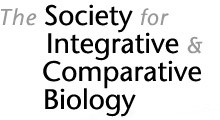| Type of Resource | Laboratory activity
|
| Topic | Circulation/respiration
|
| Taxa | Widely applicable
|
| Organizational Level | Systems
|
| Estimated time to do activity | 1 hour |
| Background required/level | any |
| Role of activity in your course | I used an early version for many years in the laboratory for an introductory biology course. That particular laboratory make especially great use of physical models--using them (as any kind of model can by used) as devices for abstraction and generalization, for seeing common functional features beneath the dazzle of biological diversity. |
| What students might learn from this course or activity | Concepts: the role of the various common mechanical elements in circulatory systems. |
| Special tools, equipment or software needed | The text describes the elements; the only unusual ones are the one way valves ("check valves"), which can be obtained from many scientific supply companies. Check under "connectors"--they should be small, in-line plastic pieces that look a bit like quick-disconnects. |
| Safety precautions, possible permissions necessary | Water tends to get on benchtops and floors, so lots of sponges and a mop or two ought to be on hand. |
| Miscellaneous advice - pitfalls to avoid | Much of the value of the exercise comes post-hoc, when students have to do some kind of written summing up. So don't fail to base some sort of written assignment on these otherwise casual explorations--some incentive to work and think systematically is generally needed. |
| Frequently asked questions by students | In the beginning course, we had some problems simply selling the pedagogical utility of physical models. Student come into biology courses expecting to fondle or disassemble organisms. |
| Evaluation | Results on examinations suggested that students had a better sense of circulatory systems as functional plumbing rather than as just a lot of names and places. We could count on proper answers to such questions as why no neural control of heart valves was necessary. |
| Description | Using simple components--flexible and glass tubing, T-tubes, squeeze bulbs, capillary or catheter tubing, one-way valves, and balloons, students self-discover the role of the various elements needed to make a pumped circulation. They can explore the operation of single- and dual-pump closed systems as well as open systems, and they inevitably (and valuably) encounter arrangements that don't work at all well. |
| Associated Files |
|

